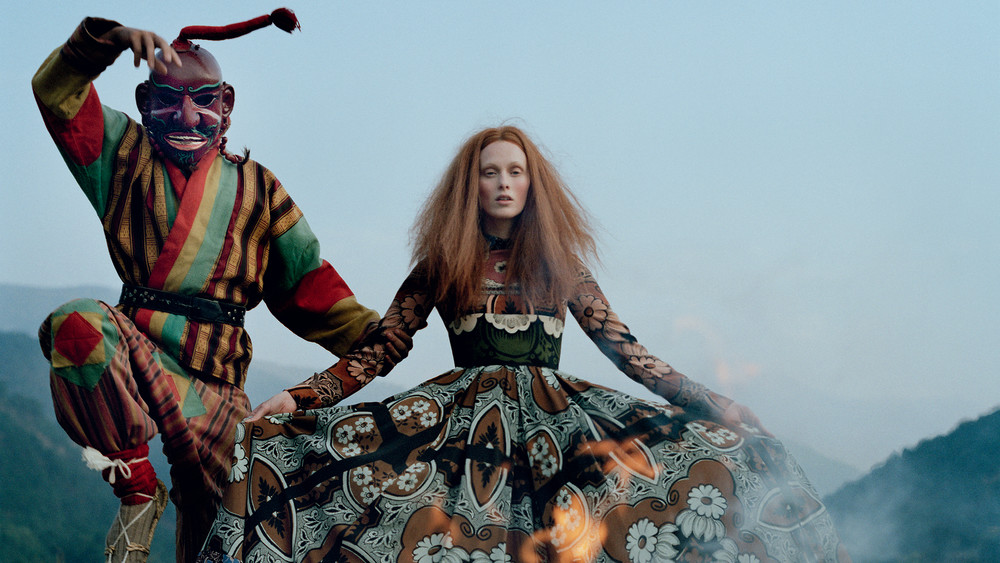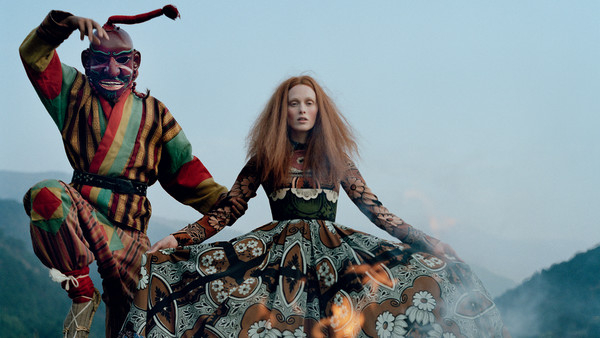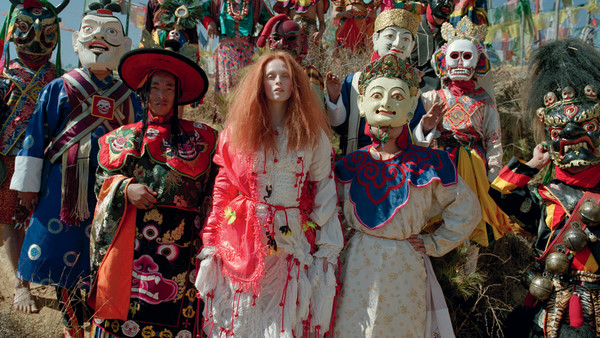
From the very start, Condé Nast has been unafraid to take risks
An interview with Jonathan Newhouse, Chairman of the Board of Directors
“It was a small company for a long time”, says Jonathan Newhouse, Chairman of the Board of Directors of Condé Nast, the company of which he has been part of for 29 years. It started in 1909, when publisher Condé Montrose Nast purchased a weekly society gazette from New York called Vogue, that had been established in 1892. He soon transformed it into a monthly magazine, which would go on to become the best-known and most influential fashion publication in the world. This was the beginning of the Condé Nast story, and the company has since grown to become a benchmark of publishing quality, known across the globe, with iconic brands in 31 markets.
From the very start, Condé Nast has been unafraid to take risks. Whether it was entering the history books as the first publisher to establish international editions with the launch of British Vogue in 1916 – at the height of WWI – or pioneering the use of colour photography in magazines in the 1930s, which cemented Condé Nast’s reputation for visually arresting storytelling. A new era was marked for the company as it began a period of expansion in 1959, with the launch of its first licensed edition – Vogue Australia.
This era of transformation continued when, a year later, it was purchased by Samuel I. Newhouse, as part of his media company Advance Publications. It remains with the Newhouse family to this day, and has seen many changes along the way. The period from the ‘60s to the late-‘80s saw the launch of Italian Vogue in 1965, and L'Uomo Vogue in 1968 – magazines that cemented Italy’s place as a fashion leader. Condé Nast began publishing in Brazil in 1975, Germany in 1979 and Spain in 1988. By the early ‘90s the company was recognised as the leading international publisher of luxury upmarket magazines in the world.
“Any time we moved into a new market was very exciting,” says Jonathan Newhouse. From the mid-‘90s to the present day, the company has undergone a period of accelerated growth, launching in Japan, China, Russia, India, Mexico and numerous new markets in Eastern Europe and Asia (the launch in Taiwan of GQ and Vogue in 1996 marked the first time two Condé Nast publications have launched in the same day).
As well as the brands that are now household names worldwide – including Vogue, Vanity Fair, AD, GQ and Wired – some more specialist titles have launched in individual markets, including South Africa’s Glamour Hair, Condé Nast’s first and only dedicated hair magazine. Vanity Fair Italia is Condé Nast’s only weekly magazine. Since relaunching in 2003, it has become one of Condé Nast’s most successful titles. Incidentally, Condé Nast’s Italian operations also boast the company’s longest-standing employee, Giuseppe MondaniMondoni, who has been part of the Condé Nast world for over five decades.


Copyright © Left: Tim Walker for Vogue
Copyright © Tim Walker for Vogue
As well as publications that have been "forgotten" over the years, including "magazines in Germany in the 1930s, magazines in Argentina from 1929-32 – they’re still sitting on a shelf in an office in Paris", it is sometimes hard to keep in mind, due to their sheer number, the awe-inspiring collection of artists, writers, photographers, editors and creative directors who have been part of the Condé Nast story. This ranges from Salvador Dalí and Andy Warhol creating covers for Vogue, to contributions from photographers like Richard Avedon and Cecil Beaton to Steven Meisel, Juergen Teller and Corinne Day. Writers from J.D. Salinger, Virginia Woolf and Truman Capote to Zadie Smith, Junot Díaz and Chimamanda Ngozi Adichie have contributed words to Condé Nast publications. None other than Nelson Mandela guest edited an issue of Vogue Paris in 1993.
And the company continues to attract top talent to this day, who are drawn by, Newhouse says, its reputation for quality: "there’s tremendous pride in what we do and commitment and ambition to be the best, working incredibly hard and always trying to push things further."
But this passion for excellence can come at a cost. “The tragedy, or pain, of doing something like this is that all the great editors I meet are never happy,” says Newhouse. ‘The really great editors aren’t the ones that say “isn’t this a great issue?”. They are those that say “well, this is a good issue but I should have done X and Y and Z”. The best people are always pushing to do more, to do better, to have more impact, to do something that’s never been done before.’ But this desire to push boundaries is what sets Condé Nast apart: "We allow our editors and our businesspeople the freedom to innovate, to create new things, and I think that’s what the market loves about us."
Innovation is clearly in the company’s blood, and is what has seen it enter new dimensions in recent years with the launch of ventures including the Condé Nast College of Fashion & Design, the Condé Nast Luxury Conference, and a thriving restaurants and bars division. The key is to always look for new ways to connect with people, says Newhouse. To "think about the readers and the consumers and how to make their experience better, how to give them more pleasure, how to give them a richer experience."
As social media and video dominate how we consume information today, a keen awareness of how its brands are experienced continues to guide the company, ensuring that Condé Nast titles are leading the way in connecting with people on multiple platforms and in ever more engaging ways. These range from establishing market-leading presences on Instagram and Snapchat to connecting with users of China’s WeChat – on which Vogue and GQ are the strongest fashion presence. And the innovation won’t stop there. With the rise of ever more cutting-edge forms of communication, the future is looking exciting, Newhouse says. "Augmented reality will play a bigger role, artificial intelligence will play a bigger role."
With its ever-increasing number of international editions, one constant source of strength for Condé Nast is the unity of its network. One of Newhouse’s fondest memories of this unity in action is when, following the tsunami in 2011, the company hosted a Fashion’s Night Out in Tokyo – and the editors of every international Vogue edition flew in to show their support. In more recent times, the launch of the pioneering Vogue International and the union of Condé Nast’s US and International companies marks a new way forward as a closely-connected global team.
Condé Nast is, ultimately, something to be very proud of. “Our brands really touch people, inspire and move them”, Newhouse says. "Our advertising partners care very deeply about what we say, and the images we show. We make life brighter and happier and more fulfilling for a lot of people, so it’s great being part of that."

